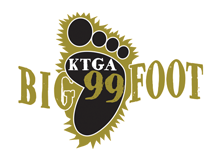September 8, 2022 |
The rate specialist hired by the City of Rawlins to analyze how the municipality bills for water service and to how to make the system pay for itself did not mince words Tuesday night. The base rate of $14 per month residents are charged for water doesn’t come close to paying cost of operating and maintaining the system.
Following months of analysis, Carl Brown told city officials they have no choice but to raise the rate.
Audio PlayerThe typical household will see an increase of about $20 per month in its water bill as a result of the pending changes. Residents may see the increase as early as October.
The State Loan and Investment Board also told the city the rates must increase to be eligible for grants. Rawlins recently applied for a $7.5 million loan through SLIB. The money would be used to help repair and replace the aging water infrastructure system has been unable to supply the city with all the water residents wanted on demand this summer.
Brown recommends that city council raise the monthly base rate to $29.48, an increase of more than 100 percent. The consumption rate, what residents pay for the water they use, would increase by a smaller amount.
Brown said the new rate represents the “cost-to-serve.” Brown was pressed by council to explain what he said would be a 50 percent increase in revenue.
Audio PlayerThe math is confusing. Table 18 on page 71 of Brown’s report breaks it down into understandable terms. According to the table, the typical residence is now paying $45 per month for 3,590 gallons of water or less. Under the new billing model, the monthly water bill would increase to $65, or a 45 percent increase.
Other parts of the rate structure would be affected, as well. Industrial customers who require larger taps would be billed more than residential taps under the recommendations Brown included in his report. Currently, all water users pay the same $14 monthly fixed rate even though the hardware and pipes involved in delivering water to high-capacity users costs more to install and replace.
Councilman Chris Weiseberg asked Brown to clarify.
Audio PlayerWater usage of both commercial and residential users would be billed the same. The base rate would be different to cover the higher costs of the larger meter and associated pipes required for large capacity users.
Brown advised council members that the longer they put off paying for what’s needed, the more it will cost in the long run because of inflation and other factors.
City council is facing the difficult task of raising the water rate high enough to satisfy the state loan board, but not so high as that it causes pain to residents.
Mayor Terry Weickum said council is trying to find the balance.
Audio PlayerRepresentative Donald Burkhart, who attended the meeting, told council that he was advised by the governor’s office that competition for the ARPA grant money will be stiff. More than 200 applications have been submitted for various water and sewer projects from communities around Wyoming. Rawlins applied for a $7.5 million grant. Rep. Burkhart said a rate increase is a box SLIB will want to see checked as they review the application.
Audio PlayerMayor Weickum said in addition to the SLIB grant, the city needs to raise the water rate to pay for debt service on a loan through the USDA that will be used to improve the water infrastructure system. City officials have estimated the total cost of restoring the system, including the pre-treatment plan, to full, reliable capacity is $20.9 million.
City council will discuss the rate increase again during a work session on September 20th. Residents are encouraged to use the feedback survey posted online at city’s web site so questions and concerns can be discussed at that meeting. A resolution could be voted on during the regular council meeting that follows the work session. Because the rate increase will be considered as a resolution, only one vote will be needed—not the usual three hearings. Council wants to have the rate increase in place before SLIB meets this fall to consider the city’s application for the $7.5 million ARPA grant.













